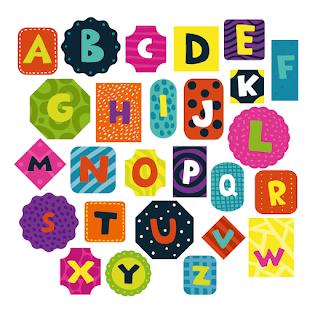How to Teach the Alphabet to Preschoolers
Are you ready for a preschooler to learn the alphabet? If so, this post is for you! This post is packed with pattern recognition features designed to help you teach the letter, so it's fun enough to keep your kids busy for months!
Read more about this special reading skill for young children, or scroll down to download our eight free, best pattern recognition features.
What is pattern recognition?
Character recognition - also known as alphabet recognition - can:
Find the difference between the 26 letters of the alphabet
Say the name of the letter
This is a great start if your child already knows the "Alphabet Song"! But character recognition is much more than the ability to sing ABC. You enjoy your children being capable of choosing and naming personal letters, and the features you download here are great.
The benefits of learning letter names
There are three main benefits to knowing the names of letters for children:
Children who know the names of the letters learn the sounds of the letters very easily. In contrast, children who do not know the names of the letters often have extreme difficulty learning the sounds of the letters.1
Children who can easily name the letters of the alphabet will learn to read easily.2, 3
As they learn the names of the letters, children are more motivated to learn more about the letters and the words around them.
Should uppercase or lowercase letters be learned first?
In terms of development, it is easier for your child to learn capital letters first. Because the visual appearance of the capital letters is even different.
Look at this capital letter:
A B C.....Z
Only the letters M / W can be translated and misspelled into another letter.
Now, look at this lowercase set:
a b c d .. x y z
Lowercase letters have many pairs of letters that can be rotated.
b / d (rotate in the vertical axis)
b / p (rotate horizontally)
d / p (rotate horizontally and vertically)
p / q (rotate vertical axis)
n / u (rotate in the horizontal and vertical axis)
That's why I recommend starting with "easy" capital letters.
But what about the fact that most of the text is lowercase? After all, there are 57 letters in this sentence, and only one of them is a capital letter. Isn't that the reason why children learn lowercase letters first?
Before your child learns to read, they will learn all the letters — uppercase and lowercase. So why not activate with qualities that are manageable to understand?
Honestly, though, it's not that complicated. If you want to teach lowercase first, that's fine. Please note that some children will confuse by the above letters. (And here's help if your child has already translated similar letters like "b" and "d.”) The most meaningful something is that your kid knows the alphabet comfortably and can recognize the letters reliably.
Now let's go to the fun things!
Here are 8 free letter recognition features you can download!
Creating the alphabet with building blocks
Creating an alphabet with colored blocks is a fun way to build letters better for preschoolers and enjoy their favorite play activities!
ABC Playdown Mats
Creating letters from playdough allows children to know the alphabet and bend the dough to form letters. Your child may not even realize he is learning!
ABC caterpillar
As your child walks through the alphabet with this colorful caterpillar, he puts the letters in alphabetical order and gets a lot of alphabet play.
Touch the letter cards
Kids learn about the earth near them via their senses. With our touch character cards, children can learn uppercase and lowercase letters with their touch.
ABC bracelets
Your toddler will appreciate his "letter of the day" every time he looks at his wrist. And tomorrow, she will get the latest bracelet to be "presented" to her family and friends!
Make your fabric booty.
Playing with the alphabet is a great way to prepare a preschooler to read. This makes learning an easy, smooth, and colorful activity to touch the letters of the alphabet.
"Fed the Puppy" alphabet game.
Our "Feed the Puppy" alphabet game allows kids to practice letter names for fun. After all, who wouldn't love learning with a cute puppy?
Alphabet picture books
Alphabet books are the perfect way to increase your literacy skills. No need for cunning chaos! You need books, a comfortable bed, and a cute preschooler.
These activities will entertain your child for hours while helping you prepare for formal reading instruction.
Follow the letters your child knows.
When teaching your children letters, make sure you reach the end of the alphabet. This may appear clear, but youthful kids often do not learn the last letters. Make sure your child knows U, V, W and A, B and C!
To keep track of the letters you learn, you can download this great little alphabet progress chart. Place it on the wall of the refrigerator or playroom.
Literacy is one of the five great skills.
Did you know that your child needs to master five skills before starting formal reading instruction? We call them the "Big Five Skills," These skills create the foundation for learning to read. Of course, they are so important that we will address them in a reading program for all of them.
If you are ready to address the remaining five great skills, read the Read About the program in advance. Your student will enjoy reading special games, crafts, and articles aloud, and you will love the way your students learn the required reading skills effortlessly.
Which of these pattern recognition tasks are you going to try first? Let me know in the comments below! Also Watch: The Soft Roots


















.png)


0 Comments